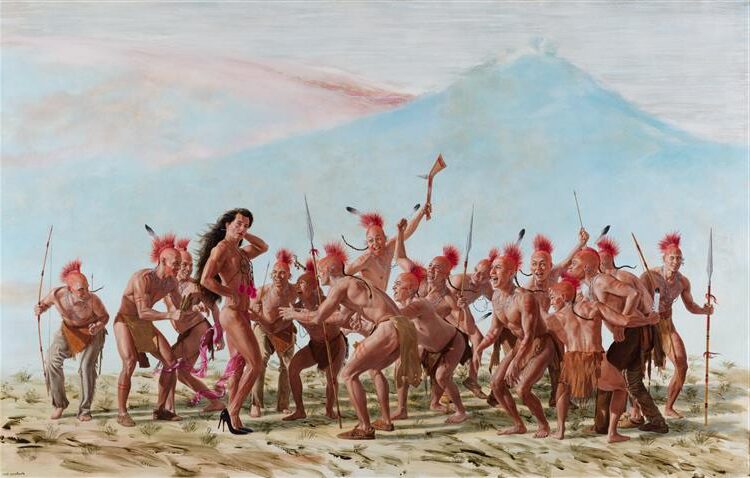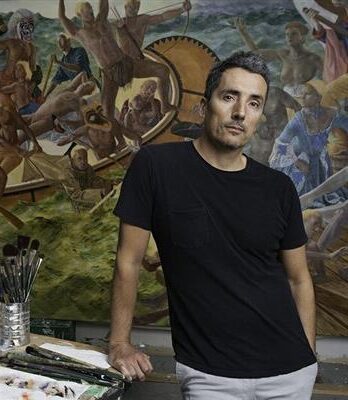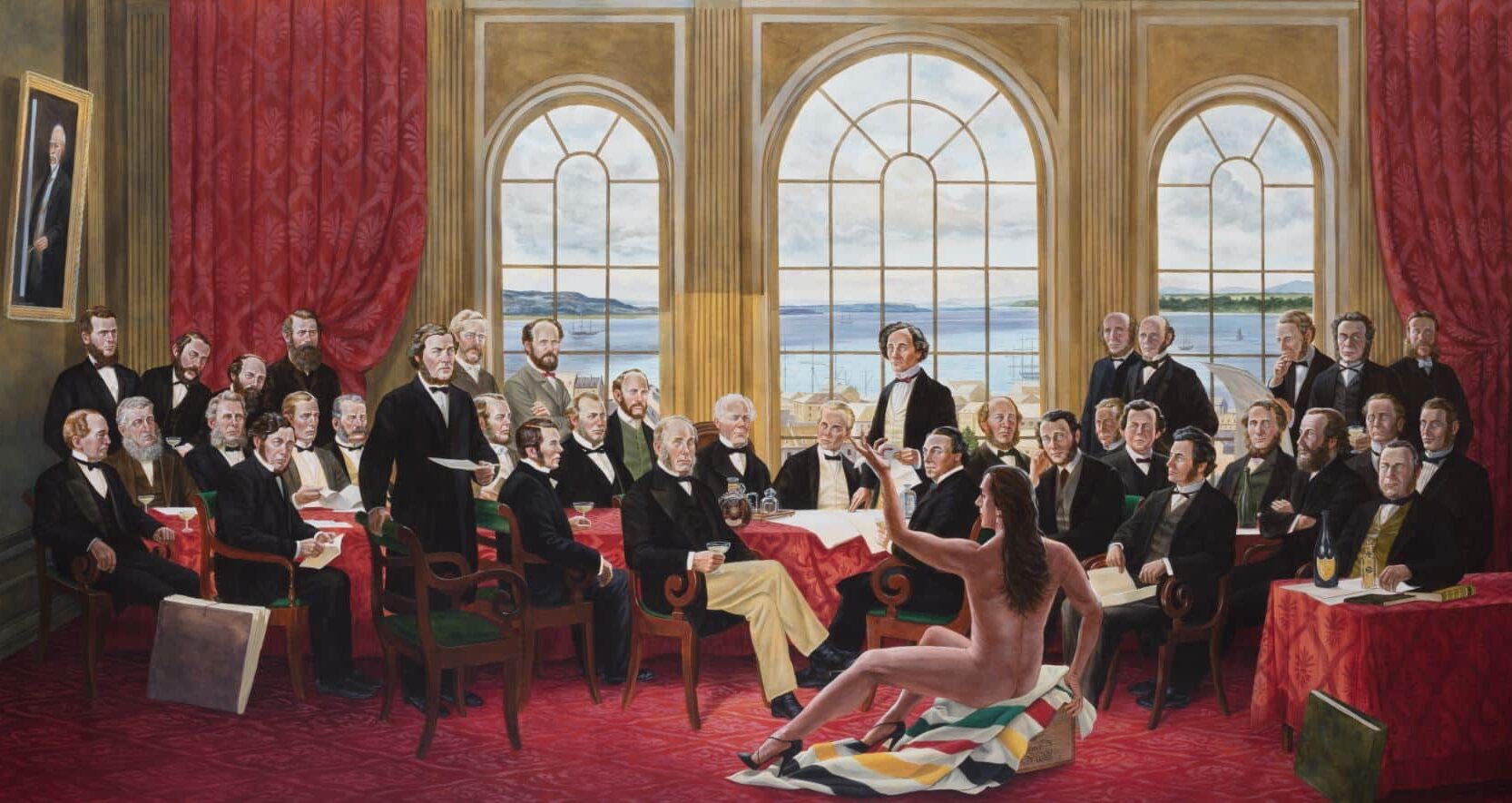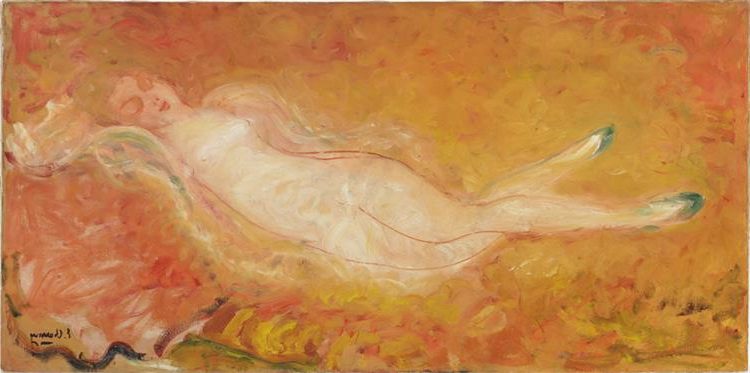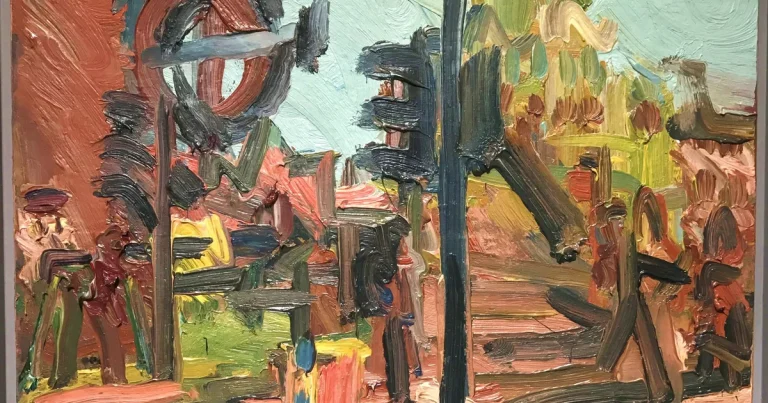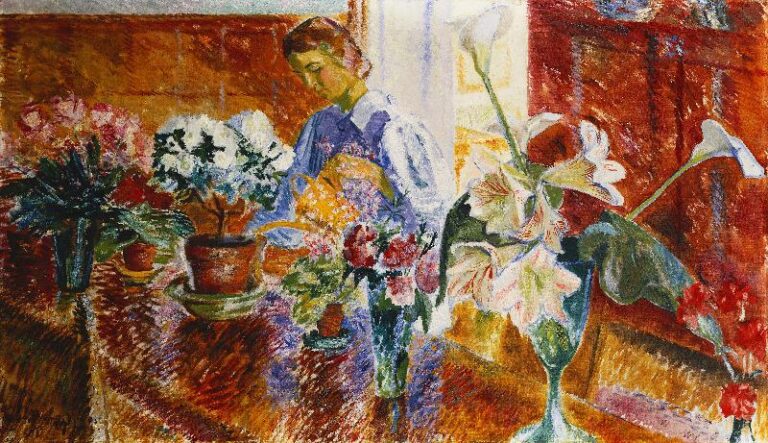Kent Monkman Artwork: Exploring Cultural Narratives and Indigenous Perspectives
Born: 13 November 1965, Ontario, Canada
Art Movement: Contemporary, Postcolonial art, Classical Realism
Nationality: Canadian
Influenced By: Jean-Honore Fragonard
Institution: Banff Centre for Arts and Creativity, the Sundance Institute in Los Angeles, and the National Screen Institute
Kent Monkman Artwork: Exploring Cultural Narratives and Indigenous Perspectives
Early Life and Foundations
Kent Monkman, a notable Cree visual artist, has made significant contributions to Canadian art. His early life experiences and education have deeply influenced his artistic career, shaping his thematic focus and unique style.
Beginnings and Cultural Background
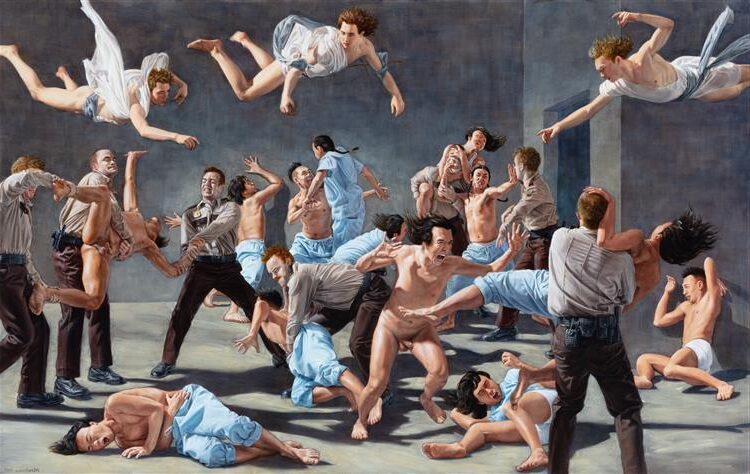
The Institution (2020) by Kent Monkman
Kent Monkman was born on November 13, 1965, in St. Marys, Ontario. He is of Swampy Cree, English, and Irish descent. Monkman was raised primarily in Winnipeg, Manitoba, as well as on reserves in northern Manitoba. His cultural background as a member of the Fisher River Cree Nation in Treaty 5 Territory is central to his work.
Growing up in these diverse environments, Monkman became aware of the impact of colonialism on Indigenous communities. These early experiences laid the groundwork for his art, which often addresses themes of colonial history and Indigenous identity.
Artistic Influences and Education
Monkman’s passion for art began at a young age. By 17, he was studying illustration through a commercial art program at Sheridan College.
His education provided a foundation in traditional and commercial art techniques, which he later expanded upon.
Influenced by both Western art and Cree traditions, Monkman developed a style that blends historical and contemporary themes. His alter ego, Miss Chief Eagle Testickle, often appears in his work to challenge historical narratives and explore gender fluidity.
Monkman’s education and cultural heritage have been instrumental in shaping his artistic perspective, allowing him to create works that are both visually striking and thematically rich.
Artistic Style and Themes
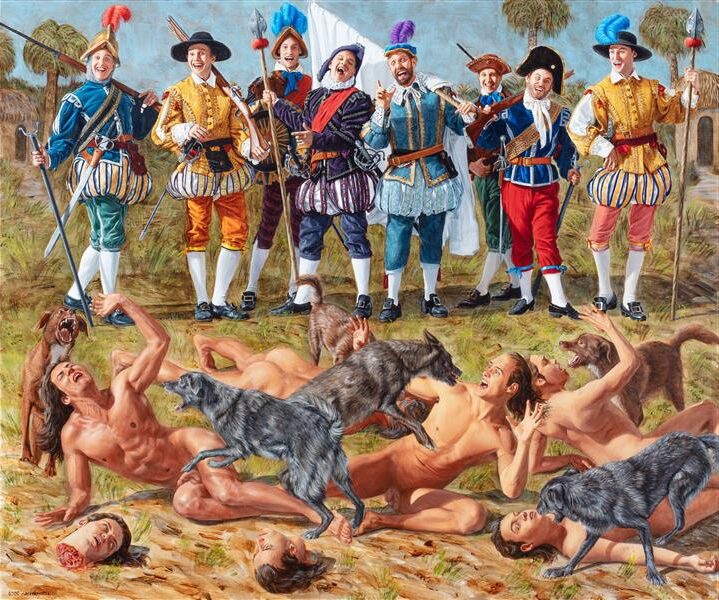
Study for Throwing Sodomites to the Dogs (2020)
Kent Monkman is known for his vibrant and bold approach to contemporary art. He often uses acrylic on canvas to explore complex themes. His work frequently addresses colonialism, sexuality, and queer art by blending historical narrative with modern critique.
Gender, Sexuality, and Queer Art
Monkman’s art is rich with themes of gender and sexuality, making significant contributions to the world of queer art. Through his paintings, he challenges traditional gender norms and celebrates diverse identities.
His pieces often depict fluidity of gender and sexual orientation, offering a powerful dialogue on queer representation in art.
His use of bold colors and dramatic compositions helps to highlight these themes, inviting viewers to engage deeply with the subject. By questioning established norms, Monkman stands as a prominent figure in contemporary art that resonates with audiences seeking inclusive representations.
Postcolonial Critique and Historical Narrative
A consistent theme in Monkman’s work is his focus on postcolonial critique. He employs art to retell North American history from an Indigenous perspective.
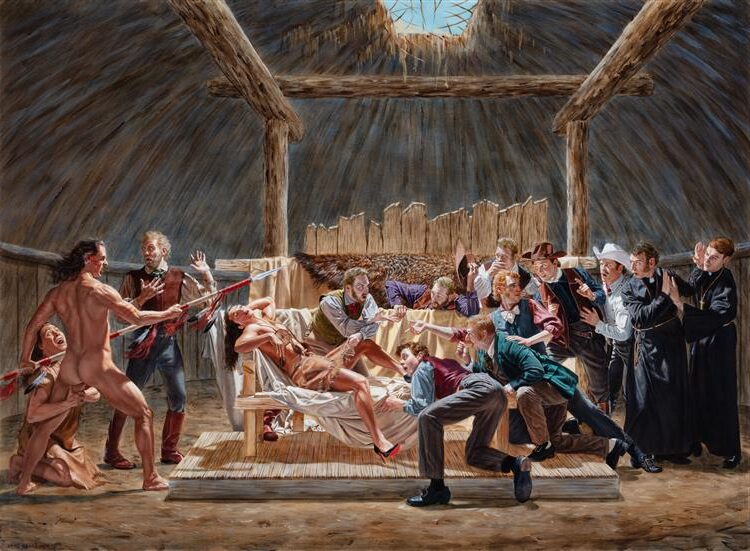
Study for The Examination (2020) by Kent Monkman
By reimagining historical events, Monkman questions the dominant narratives often perpetuated by European colonists.
His works, such as those displayed at the Metropolitan Museum of Art, incorporate figures and elements that subvert colonial imagery. This approach allows him to critique the ongoing impacts of colonialism, highlighting its effects on Indigenous peoples.
Monkman’s paintings become a platform for conversation about cultural resilience and historical truth.
Use of Alter Ego: Miss Chief Eagle Testickle
Monkman often incorporates his alter ego, Miss Chief Eagle Testickle, into his art. This character is a two-spirit being who acts as a symbol of Indigenous resilience and satire.
Through Miss Chief, Monkman cleverly critiques historical and cultural stereotypes with both humor and insight.
This character enables Monkman to blend satire with social commentary, offering a unique voice that confronts colonial attitudes. Miss Chief serves as a guide through his work, embodying the themes of both mockery and empowerment, making Monkman’s art an engaging journey through layered storytelling.
Major Works and Exhibitions

Resurgence of the People (2019) by Kent Monkman
Kent Monkman, recognized for his provocative art, combines history with contemporary themes. His paintings and exhibitions challenge colonial narratives and highlight Indigenous experiences.
Significant Pieces and their Sociopolitical Commentary
Kent Monkman is well-known for pieces that merge historical art styles with modern social themes. “Resurgence of the People” and “Welcoming the Newcomers” are examples where he blends humor with poignant critique, highlighting the experiences of Indigenous peoples.
In “The Scream” (2019), Monkman addresses the traumatic history of residential schools. His art features bold, narrative-rich paintings that reclaim Indigenous perspectives in history.
Monkman uses his alter ego, Miss Chief Eagle Testickle, to personify and satirize colonial ideologies, generating critical reflection on historical interpretations.
Exhibitions in Prestigious Venues
Monkman has had shows in various respected institutions. In 2016, the Art Gallery of Ontario hosted his work exploring the romanticization of Native American history.
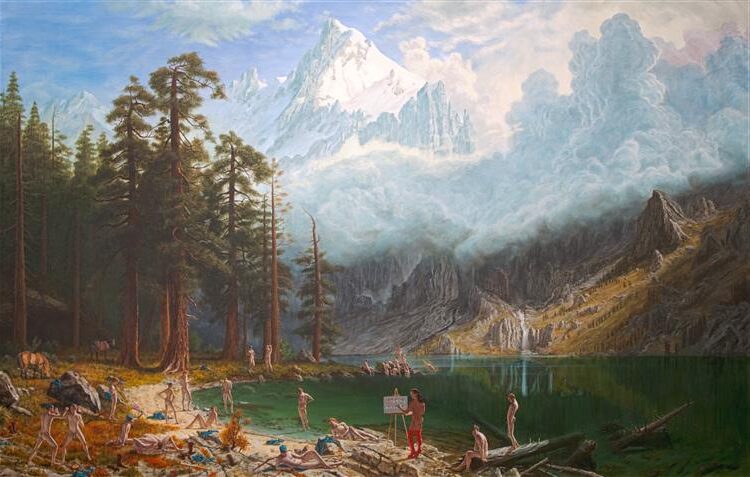
History is Painted by the Victors (2013)
His exhibition titled “History is Painted by the Victors” will be at the Denver Art Museum from April to August 2025.
The Metropolitan Museum of Art also showcased Monkman’s installations, offering a powerful platform for his commentary on colonialism. These exhibitions reveal how Monkman uses space to elevate Indigenous stories and perspectives, ensuring visibility in mainstream art discussions.
Influence and Impact
Kent Monkman’s art is known for its profound commentary on Indigenous experiences and colonial history. His work challenges traditional art narratives by highlighting themes of resilience and identity. Through vivid storytelling, Monkman sheds light on important social issues affecting First Nations communities.
Community Engagement and Identity Representation
Monkman’s art actively engages with communities by addressing the erasure of Two Spirit individuals and reasserting their presence. His work reclaims Indigenous identity by depicting historical events from a First Nations perspective.
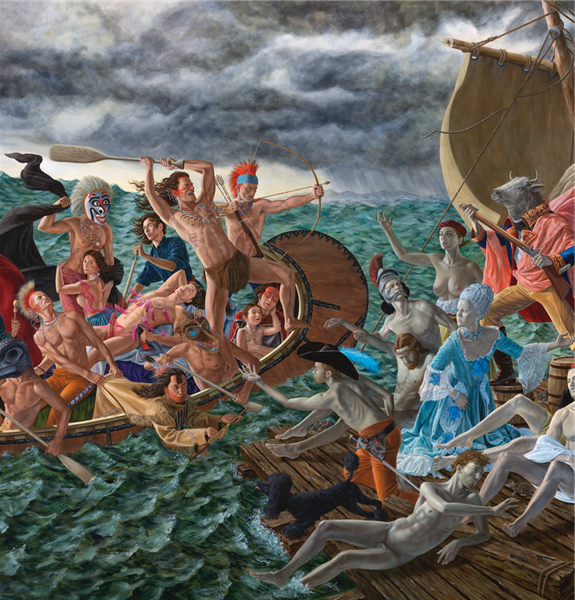
Miss Chief’s Wet Dream (2018) by Kent Monkman
Through artworks like “Miss Chief’s Wet Dream,” Monkman uses characters that subvert colonial stereotypes, revealing the nuances of gender and sexuality in Indigenous cultures.
By amplifying marginalized voices, he empowers Indigenous Peoples to reclaim their narratives. His initiatives often involve collaboration with other artists and community members. This approach fosters a shared sense of identity and resilience among Indigenous communities, emphasizing their ongoing struggle and victories.
Monkman’s bold visuals and narratives encourage dialogue and understanding, making him a pivotal figure in contemporary art discussions.
Contributions to Indigenous and Canadian Art Discourses
Monkman significantly contributes to both Indigenous and Canadian art discourses. He reframes art history by infusing it with Indigenous perspectives, offering a critical lens on colonization.
His works, like “Resurgence of the People,” displayed at prestigious institutions such as the Metropolitan Museum of Art, challenge mainstream narratives.
By questioning the representation of Indigenous peoples in art, he enriches Canadian cultural discussions. Monkman highlights how historical art often marginalized or misrepresented First Nations stories.
His contributions prompt museums and galleries to reconsider their collections and the histories they represent. Through his interdisciplinary approach, Kent Monkman establishes a unique space where Indigenous and Canadian art intersect and evolve.
Selected Series and Installations
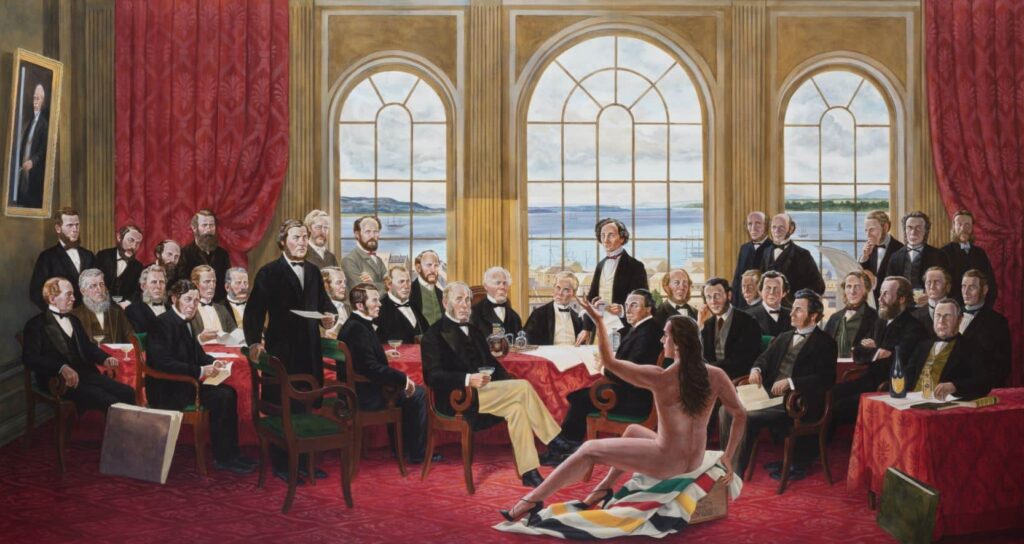
The Daddies (2016) by Kent Monkman
Kent Monkman, a renowned Cree artist, has created influential artworks that explore Indigenous experiences and historical narratives. Two notable projects, “Shame and Prejudice: A Story of Resilience” and artworks within “The North American Indigenous Art Movement”, showcase his ability to challenge the colonial gaze through contemporary art installations.
Shame and Prejudice: A Story of Resilience
“Shame and Prejudice: A Story of Resilience” is a significant series by Kent Monkman. This installation was showcased at the Glenbow Museum and other venues, presenting a profound exploration of Indigenous experiences in Canada.
Monkman uses a narrative approach to challenge colonial perspectives. Each piece integrates historical events with Indigenous viewpoints, presenting an alternative historical narrative.
His use of vivid, emotive imagery invites viewers to contemplate the lasting impacts of colonization.
Through mixed media and powerful storytelling, Monkman’s work emphasizes resilience. He evokes empathy and understanding, making Indigenous stories central to Canadian history.
The North American Indigenous Art Movement
Monkman’s contributions to the North American Indigenous Art Movement are notable for their depth and insight. He plays a key role in bringing Indigenous art into the contemporary scene by blending traditional themes with modern techniques.
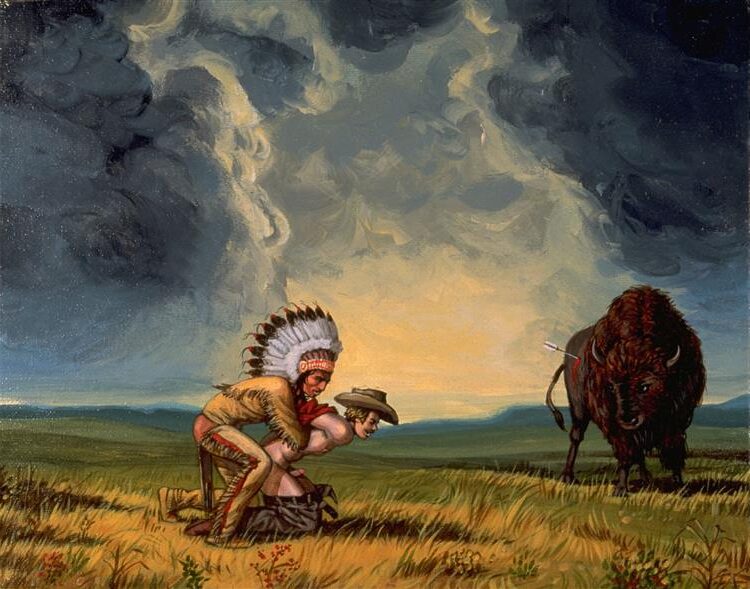
Heaven and Earth (2001) by Kent Monkman
His artworks often depict complex narratives that counteract stereotypical portrayals. Monkman crafts pieces that are visually striking, commanding attention and fostering dialogue about Indigenous identity and resistance.
By creating art that speaks to both historical and current Indigenous issues, Monkman strengthens the movement. His pieces encourage recognition of Indigenous contributions to the art world and help reshape cultural understandings.
Frequently Asked Questions
Kent Monkman’s artwork addresses themes like Indigenous history, identity, and colonialism. His style combines traditional and modern influences. Many of his works can be viewed in museums and galleries, and some prints are available for purchase.
What is the meaning behind Kent Monkman’s paintings?
Kent Monkman’s paintings often explore themes of Indigenous rights, history, and resilience. They draw attention to issues like racism and the erasure of Two Spirit individuals, offering a critical perspective on the historical representation of Indigenous peoples.
How many paintings has Kent Monkman completed?
The exact number of paintings by Kent Monkman is not readily available. However, his career spans several decades, during which he has produced numerous works that have been widely exhibited in museums and galleries.
Where can one view Kent Monkman’s artwork?
Kent Monkman’s artwork is displayed in various museums and galleries, including the Metropolitan Museum of Art in New York City and the Art Gallery of Nova Scotia. His work has also been part of exhibitions at the University of Toronto.
What painting style is associated with Kent Monkman?
Kent Monkman’s style blends traditional Indigenous art with modern techniques. He is known for large-scale, vivid paintings that reinterpret historical scenes from a contemporary Indigenous perspective, often incorporating humor and satire.
Can you purchase prints of Kent Monkman’s artwork?
Prints of Kent Monkman’s artwork are available for purchase through select galleries and online platforms. Collectors often seek his works for their thought-provoking content and distinctive style.
Who is Miss Chief in Kent Monkman’s work?
Miss Chief Eagle Testickle is a recurring character in Kent Monkman’s artwork. This alter ego embodies themes of gender fluidity and challenges colonial narratives.
She serves as a central figure in many of his paintings, bringing humor and critical commentary.

